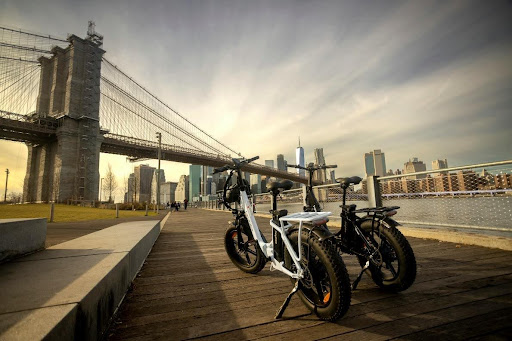Electric bikes, or eBikes, are revolutionizing the way we commute, exercise, and explore the outdoors. These battery-powered bicycles offer a unique blend of convenience, efficiency, and fun, making them an attractive option for a wide range of people.
Whether you’re a city commuter looking to avoid traffic, an off-road enthusiast seeking new adventures, or someone who wants a more sustainable mode of transportation, there’s an eBike for you.
However, with the growing popularity of eBikes, the market is flooded with various models and features, which can make the buying process overwhelming.
This article will guide you through the essential factors to consider when buying an eBike.
Understanding Your Needs and Riding Style
Before diving into the technical details and features of an eBike, it’s crucial to understand your own needs and riding style. Are you planning to use your eBike for daily commuting, weekend leisure rides, off-road adventures, or a combination of these? Your primary use will significantly influence the type of eBike you should buy.
If you’re a commuter, you’ll likely want an eBike that’s comfortable for longer rides and equipped with features like fenders, lights, and a rear rack for carrying items. City eBikes often come with smooth tires and a lightweight frame, making them ideal for navigating urban environments.
On the other hand, if you’re an outdoor enthusiast who enjoys trail riding or mountain biking, you’ll need an eBike with robust suspension, wider tires, and a more powerful motor. These features ensure better handling on rough terrains and provide the necessary support for more adventurous rides.
For those looking to replace short car trips with an eco-friendly alternative, a versatile eBike that offers a balance between commuting and recreational use might be the best option.
Evaluating Price and Budget
One of the most critical factors to consider when purchasing an eBike is the cost. The electric bike price can vary significantly depending on the brand, features, and overall quality. It’s essential to set a budget before you start shopping and be realistic about what you can afford.
Entry-level eBikes typically start around $1,000 to $1,500. These models usually come with basic features and may have less powerful motors and smaller battery capacities. They are suitable for casual riders or those new to the eBike world.
Mid-range eBikes, priced between $1,500 and $3,000, offer a good balance of quality, performance, and features. These bikes often come with better components, more powerful motors, and larger batteries, making them an excellent option for regular commuters or recreational riders who want a bit more from their eBike.
High-end eBikes, which can cost $3,000 and up, are packed with advanced features, top-tier components, and powerful motors. These bikes are designed for serious riders who need a high-performance eBike for daily commuting, long-distance rides, or off-road adventures.
When considering the price, it’s also essential to factor in additional costs such as accessories, maintenance, and potential upgrades. Investing in a quality eBike may come with a higher upfront cost, but it can save you money in the long run by reducing the need for frequent repairs and replacements.
Battery Life and Range
The battery is one of the most crucial components of an eBike, as it determines how far you can ride on a single charge. When evaluating an eBike’s battery, consider its capacity, measured in watt-hours (Wh), and the range it offers.
Battery capacity directly affects the range. A higher-capacity battery will allow you to travel longer distances before needing a recharge. For instance, a 500Wh battery typically provides a range of 20-50 miles, depending on factors such as terrain, rider weight, and level of pedal assist.
It’s essential to choose an eBike with a battery that matches your intended use. If you plan to use your eBike for long commutes or extended rides, opt for a model with a larger battery capacity. Conversely, if you only need the eBike for short trips around town, a smaller battery may suffice.
Another factor to consider is the type of battery. Lithium-ion batteries are the most common in eBikes due to their lightweight, long lifespan, and efficient performance. Additionally, check whether the battery is easily removable, as this can be convenient for charging and security purposes.
Keep in mind that battery performance can degrade over time. Manufacturers usually provide information on the expected lifespan of the battery, which is typically measured in charge cycles. Investing in a high-quality battery from a reputable brand can ensure better longevity and reliability.
Motor Power and Performance
The motor is the heart of an eBike, providing the power assistance that makes riding easier and more enjoyable. When choosing an eBike, it’s crucial to consider the motor’s power, measured in watts (W), and its placement on the bike.
Motor power typically ranges from 250W to 750W, with higher wattage providing more power and better performance on hills and rough terrains. For most riders, a 250W or 350W motor is sufficient for flat or moderately hilly areas. However, if you live in a region with steep hills or plan to carry heavy loads, a 500W or 750W motor may be more appropriate.
There are three common types of motor placements in eBikes: hub motors (located in the wheel hub), mid-drive motors (located in the center of the bike), and all-wheel-drive systems. Hub motors are generally quieter and more affordable, making them a popular choice for casual riders and commuters. Mid-drive motors, on the other hand, offer better weight distribution and superior performance on hills, making them ideal for off-road and high-performance eBikes.
Additionally, consider the motor’s responsiveness and the type of pedal assist system it uses. Torque sensors provide a more natural and responsive riding experience by adjusting the motor’s power based on the rider’s pedaling effort. Cadence sensors, while less expensive, provide power based on the pedaling speed, which can feel less intuitive.
Buying an eBike is an exciting investment that can transform the way you travel and explore your surroundings. By understanding your needs and riding style, evaluating the electric bike price and budget, considering battery life and range, and assessing motor power and performance, you can make a well-informed decision that suits your lifestyle and preferences.
Remember to take your time, research different models, and test ride several eBikes to find the perfect match. With the right eBike, you’ll enjoy the benefits of efficient, eco-friendly, and enjoyable riding for years to come.
Keep an eye for more latest news & updates on Internal Insider!










